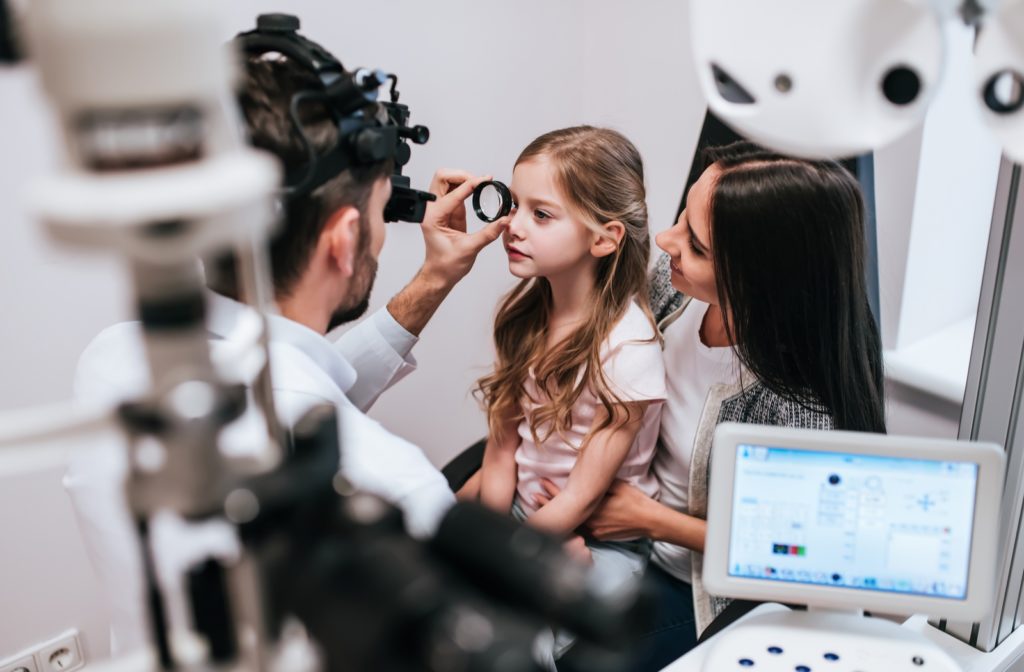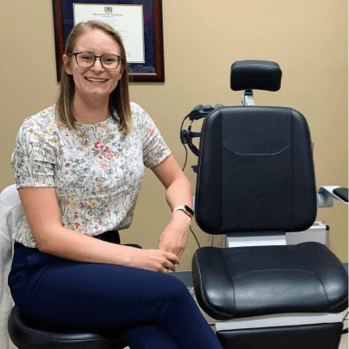Children’s eyes go through many changes as they grow, and several vision-related problems can develop. Conditions like myopia and astigmatism are common, but how can you tell if your child has troubles?
Continue reading to learn more about the signs your child has a vision problem.
Vision Problems Can Affect Your Child’s Development
Your child’s vision is crucial for their development–helping them see, interact, and understand the world around them. Roughly 80% of your child’s learning is visual, so a vision problem can significantly affect their development.
An undiagnosed vision problem can disrupt your child’s ability to:
- Read
- Focus on a whiteboard
- Participate in classroom activities
- Maintain concentration
- Interact with others
- Play sports
If your child has any problems, early identification can help protect their vision.
Vision Problems Can Affect Your Child’s Ocular Health
Vision problems can develop at any age, but many begin in childhood. These issues may not seem serious, but some conditions can affect your child’s eye health.
Myopia, a common condition, can increase the risk of several eye diseases in adulthood. Without help from your optometrist, your child’s vision may be at risk.
Nearly 25% of Canadian children have an undiagnosed vision problem, but many kids may not notice. If your child has an issue from a young age, they likely don’t recognize any issues. Understanding these signs can help you determine when your child needs an eye exam.
Signs Your Child May Have a Vision Problem
So how do you know if your child has a vision problem? There are many different signs your child may be having issues. Some are more common, while others may be less obvious.
Some common signs of vision problems in children include:
- Blurry or double vision
- Squinting or holding objects close to their face
- Headaches
- Eyestrain
- Turning or tilting their head
- Excessive blinking or rubbing
- Tearing, itchy, or burning eyes
- Covering or closing one eye
If you notice any of these symptoms in your child, booking a comprehensive eye exam can help diagnose any potential problems. Besides these symptoms, there are many signs you may not notice at first.
Other Signs of a Vision Problem
Keep an eye out for some not-so-obvious symptoms of visual problems in your child, such as:
- Disliking near work
- Short attention span
- Daydreaming during work time
- Skipping words, letters, or lines when reading or taking notes
- Using a finger or moving their head to track when reading
- Poor hand-eye coordination
- Poor school performance
- Behaviour problems
- Trouble reading or difficulty remembering what they read
- Delayed learning of the alphabet
- Consistent letter, number or word reversals
- Not completing assignments on time
If your child struggles in school or other areas of life, your optometrist should assess how they’re doing. Many common vision problems develop as children grow.
Common Vision Problems for Children
While children can develop many eye conditions, some are more common than others. Your optometrist will complete a full health check during your appointment to evaluate your child’s eyes.
Some common vision problems for children include:
Myopia
Myopia is a common condition affecting nearly 30% of all Canadians. It causes nearby objects to appear clearly while far away objects are blurry. This blurriness occurs because myopic eyes are abnormally shaped, causing light to focus improperly.
Myopia develops in childhood and continues to progress as your child grows, causing their vision to worsen. More severe cases of myopia can lead to a reliance on heavy prescriptions in adulthood and an increased risk of several eye diseases, such as glaucoma, retinal detachment, and cataracts.
Strabismus
Strabismus is a condition where the eyes don’t line up, or one or both eyes wander. When this condition develops, one eye becomes the dominant one while the other is weaker. This condition occurs when there is improper teamwork between the eyes and the brain.
This condition doesn’t go away with time; it needs treatment for it to fully resolve.
Amblyopia
Amblyopia, more commonly known as lazy eye, is significantly weaker vision in one eye, even when wearing glasses. This condition typically occurs because of abnormal development in early childhood. The brain favours one eye, causing vision in the other to weaken.
Without proper treatment, amblyopia can lead to vision loss.
Astigmatism
Astigmatism is a refractive error where the eye’s cornea or lens has mismatched curves. This condition is often present from birth and can develop alongside other refractive errors. The treatment for astigmatism is either a pair of glasses or contact lenses.
No matter what vision problem your child may have, early diagnosis can help protect their vision. Your optometrist can identify any problems and recommend a treatment plan for your child’s needs.
Protect Your Child’s Vision
Your child’s vision can change a lot as they age. Watch for some of the common symptoms your child may be struggling with their vision, and take them for a comprehensive eye exam. If your child has symptoms of a vision problem, book an appointment today.




